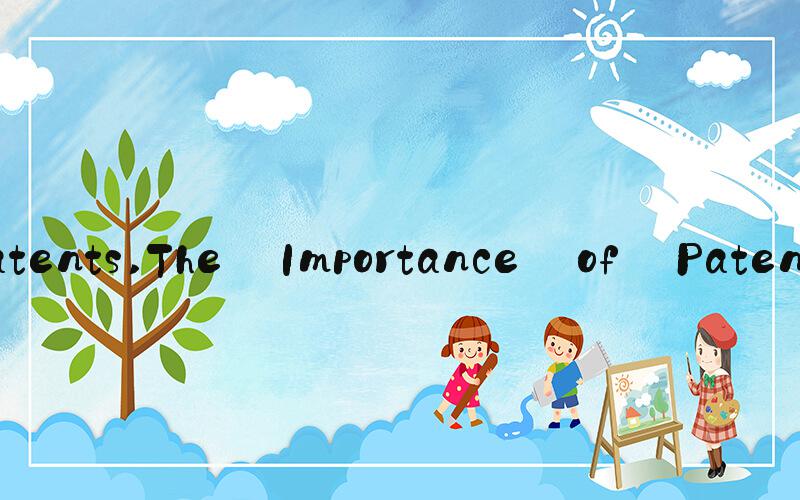 Patents: The Key to Innovation
Patents: The Key to InnovationPatents play a crucial role in driving innovation and progress in various industries. A patent is a legal document granted by the government that gives the holder exclusive rights to manufacture, use, and sell a particular invention for a specified period of time.
The Importance of PatentsPatents provide inventors with the necessary incentive to invest time, money, and resources into the development of their ideas. By granting patent protection, the government ensures that inventors are able to recoup their investment and profit from their innovations. This, in turn, encourages further research and development, leading to new discoveries and technological advancements.
Patents also promote competition and encourage others in the industry to develop similar or better products. In this regard, patents drive innovation and progress by ensuring that companies are incentivized to create the best possible product. By encouraging competition, patents also help to keep prices reasonable and make products more widely available.
Types of PatentsPatents can be awarded for a wide range of inventions, including machines, processes, and even software. There are three main types of patents:
Utility patents: These are the most common type of patents and cover new and useful processes, machines, manufactures, and compositions of matter. Utility patents are valid for 20 years from the date of filing.
Design patents: These patents protect the ornamental design of an object, such as the shape, pattern, or color. Design patents are valid for 15 years from the date of filing.
Plant patents: These patents protect new varieties of asexually reproduced plant species. Plant patents are valid for 20 years from the date of filing.
The Patent Application ProcessTo obtain a patent, an inventor or assignee of the invention must file a patent application with the US Patent and Trademark Office (USPTO). The application must include a description of the invention, drawings (if necessary), and claims which define the scope of the invention. The USPTO will then conduct a search to determine if the invention is novel and non-obvious.
If the USPTO determines that the invention is eligible for a patent, a Notice of Allowance will be issued. The inventor must then pay the issue fee and the patent will be granted. Alternatively, the USPTO may reject the application, either because the invention is not novel or non-obvious, or because it fails to meet other legal requirements. The inventor may respond to the rejection by filing an amendment to the application or appealing the decision to the Patent Trial and Appeal Board (PTAB).
Patents and Intellectual PropertyPatents are a form of intellectual property, which is an intangible asset that can be owned and traded like physical property. Other forms of intellectual property include trademarks and copyrights. By granting exclusive rights to inventors, patents help to protect their intellectual property and prevent others from using or profiting from their work without permission.
Patents can also be licensed or assigned to other parties in exchange for royalties or other forms of compensation. This allows inventors to monetize their inventions without having to manufacture or sell products directly. Licensing and assigning patents can also help to facilitate the transfer of technology and knowledge between companies and individuals.
The Future of PatentsAs technology continues to evolve and new industries emerge, the role of patents in driving innovation and progress is expected to grow. However, there are also concerns about the potential negative effects of patents on innovation, particularly in the pharmaceutical and biotech industries where high prices and patent disputes can limit access to important medicines and therapies.
Despite these concerns, patents remain a key driver of innovation in many industries and are likely to continue to play an important role in shaping the future of technology and commerce.
